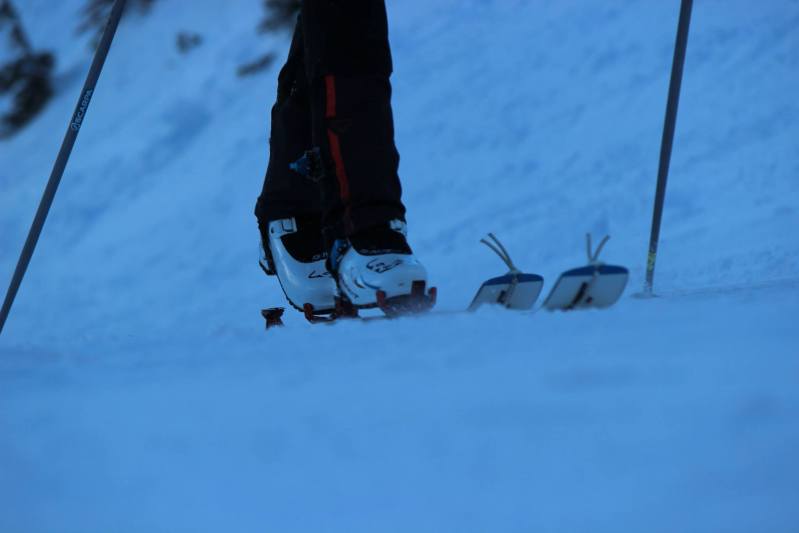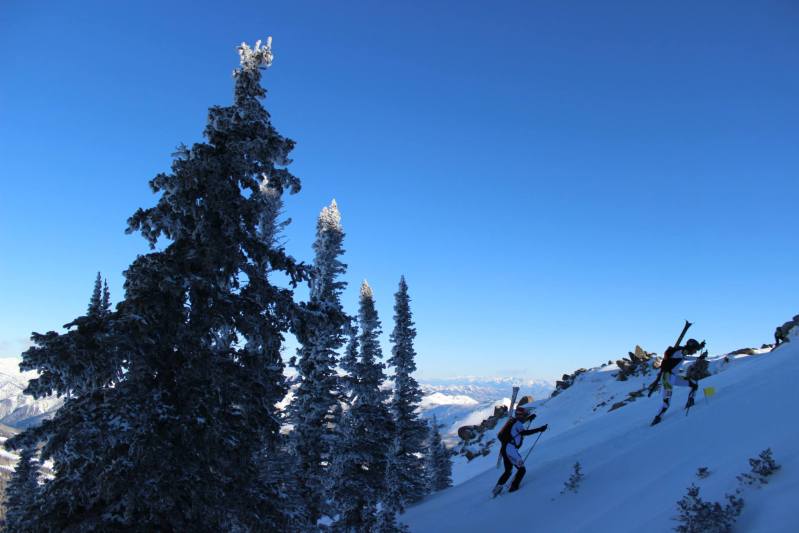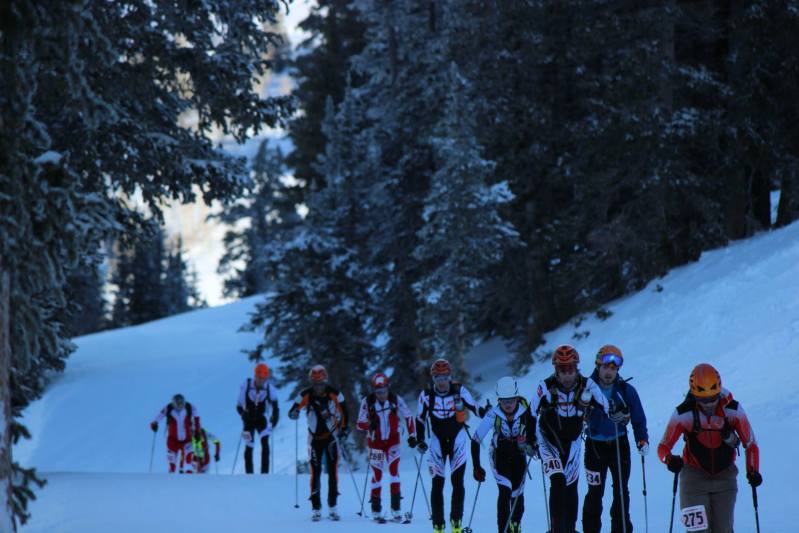We’ve been fans of backcountry skiing for years now; all of the powder, and none of the crowds make for a great day on the snow. The only trade off? You’ll be earning your turns with ski touring gear every step of the way.
If you don’t mind a little sweat, backcountry skiing is one of the best winter hobbies out there. However, trust Type-A athletic junkies to turn everything mellow and fun into a painful sufferfest. If you’ve ever seen a backcountry rider in tight clothing veritably sprinting uphill, you’ve likely met (albeit briefly) a ski-mountaineering racer on a training run.
So what exactly is ski-mountaineering racing? Picture a mountain marathon – run uphill, in the snow, on specially designed skis. When you get to the top, lock your gear down and ski down as fast as possible (trust us, on ultralight race gear this is scarier than it sounds), and start up your next climb. If it sounds absolutely miserable, well, it sort of is. For many racers though, that is part of the draw. Conquering the elements and the mountain while you race the clock is both a great motivator to keep your training up over the winter, and also to dig deep and find the “fun” when you’re charging uphill in forty mile-an-hour wind and sub-zero temperatures. If we haven’t scared you away from the sport yet, read on for our favorite ski-mountaineering races in North America.

Power Of 4: Aspen, CO
The Power of 4 will always have a special place in our hearts as our first taste of real mountain fueled pain. Three years ago we suited up with friends from Outside Magazine and Gear Junkie for a taste of the race. The full course covers every resort in Aspen, CO – Snowmass, Buttermilk, Aspen Highlands, and Aspen. We did an abbreviated “Power of 2” half course that took us over 12 miles and nearly 8,000 feet of vertical. After almost six hours on the course, crossing the finish line was a sublime experience – and hooked us on skiing uphill ever since.

Shredhorn: Big Sky, MT
The Shredhorn is an annual race every spring in Big Sky, MT. In terms of distance, it is up there with the Power of 4 – the course covers 16-18 miles, and 8,600 vertical feet of climbing and descending. However, this jaunt around Lone Peak is decidedly scarier, as many of the climbs are far into dedicated alpine terrain, and you’ll often be boot packing and climbing along exposed ridgelines and cliff bands. If you’re scared of heights or easily get sketched out, it might be a good idea to save this one for a couple seasons until you’ve got experience under your belt.
Wasatch Powderkeg: Brighton, UT
The Powderkeg is a weekend race festival that features backcountry ski clinics, gear demos, and two different races for every skill level. Day one kicks things off with a vertical sprint up Brighton Ski Resort to the tune of 1,300 feet. If this lung buster isn’t enough for you, register for the full distance race on day two. This ten-mile course climbs major peaks and ridgelines along the resort boundaries, and gives you a chance to spot Park City, Salt Lake, and the Heber Valley. Of course, you’d probably enjoy the views more if you weren’t fighting the thin oxygen above 10,000 feet the entire way.

Grand Traverse: Crested Butte to Aspen, CO
The Grand Traverse the the granddaddy of ski-mountaineering races. Covering more than forty miles from Crested Butte to Aspen, CO, this epic race crosses some of the most iconic terrain in the country. While it doesn’t have the painful vertical of some of the other races on our list (only 7,000 feet), it makes up for it distance and the amount of gear you have to carry. Racers travel in pairs, and have to have self-rescue gear, shelter, and sleeping bags in case of nasty weather. To make it even more fun, the start is over night, ensuring half your time on the course will be spent in pitch darkness.


